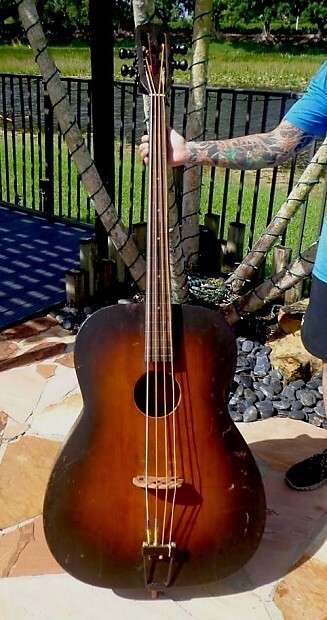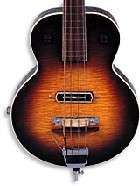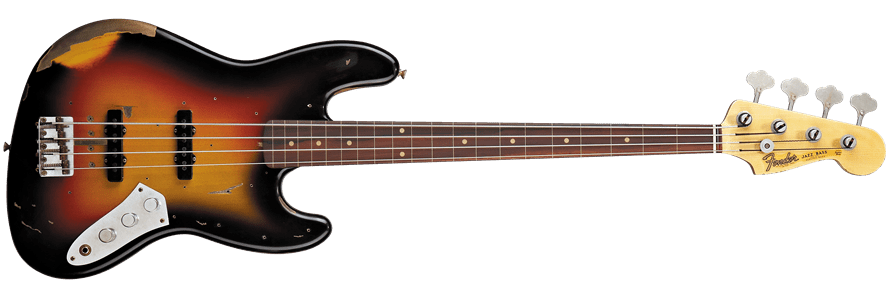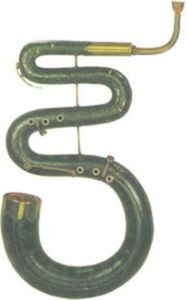
Bass Guitar History
Contents
With the advent of jazz-rock, jazz musicians began to use electronic instruments and various effects, exploring new “sound palettes” not characteristic of traditional jazz. New instruments and effects also made it possible to discover new playing techniques. Since jazz artists have always been famous for their sound and personality, this process was very natural for them. One of the jazz researchers wrote: “A jazz musician has his own voice. The criteria for evaluating its sound have always been based not so much on traditional ideas about the sound of an instrument, but on its [sound] emotionality. And, one of the instruments that revealed itself in jazz and jazz-rock bands of the 70-80s was the bass guitar , the history of which you will learn in this article.
Players such as Stanley Clarke and Jaco Pastorius have taken bass guitar playing to a whole new level in a very short history of the instrument, setting the standard for generations of bass players. In addition, initially rejected by “traditional” jazz bands (with a double bass), the bass guitar has taken its rightful place in jazz due to its ease of transportation and signal amplification.
PREREQUISITES FOR CREATING A NEW TOOL
The loudness of the instrument is an eternal problem for double bassists. Without amplification, it is very difficult to compete in volume level with a drummer, piano, guitar and brass band. Also, the bassist often couldn’t hear himself because everyone else was playing so loudly. It was the desire to solve the double bass loudness problem that motivated Leo Fender and other guitar makers before him to create an instrument that met the requirements of the jazz bassist. Leo’s idea was to create an electric version of a double bass or a bass version of an electric guitar.
The instrument had to meet the needs of musicians playing in small dance bands in the US. For them, it was important the convenience of transporting the instrument when compared with the double bass, greater intonational accuracy [how the note builds], as well as the ability to achieve the necessary balance of volume with the electric guitar gaining popularity.
One might assume that the bass guitar was popular among popular music bands, but in fact, it was most common among the jazz bands of the 50s. There is also a myth that Leo Fender invented the bass guitar. In fact, he created a design that has become the most successful and sellable, compared to competitors.
THE FIRST ATTEMPTS OF GUITAR MANUFACTURERS
Long before Leo Fender, since the 15th century, attempts have been made to create a bass register instrument that would produce a clean, reasonably loud low end. These experiments consisted not only in finding the right size and shape, but also went as far as attaching horns, as on old gramophones, in the bridge area to amplify the sound and directionally spread it.
One of the attempts to create such an instrument was Regal bass guitar (Regal Bassoguitar) , presented in the early 30s. Its prototype was an acoustic guitar, but it was played vertically. The size of the tool reached 1.5 m in length, excluding a quarter-meter spire. The fretboard was flat like on a guitar, and the scale was 42” like on a double bass. Also in this instrument, an attempt was made to solve the intonation problems of the double bass – there were frets on the fingerboard , but they were cut flush with the surface of the neck. Thus, it was the first prototype of a fretless bass guitar with fretboard markings (Ex.1).

Later in the late 1930s, Gibson introduced their Electric Bass Guitar , a huge semi-acoustic guitar with a vertical pickup and an electromagnetic pickup. Unfortunately, the only amplifiers at the time were made for the guitar, and the new instrument’s signal was distorted due to the amplifier’s inability to handle low frequencies. Gibson only produced such instruments for two years from 1938 to 1940 (Ex. 2).

Many electric double basses appeared in the 30s, and one of the representatives of this family was the Rickenbacker Electro Bass-Viol created by George Beauchamp (George Beauchamp) . It was equipped with a metal rod that stuck into the amp cover, a horseshoe-shaped pickup, and the strings were wrapped in foil in place just above the pickup. This electric double bass was not destined to conquer the market and become really popular. However, Electro Bass-Viol is considered to be the first electric bass recorded on a record. It was used when recording the Mark Allen & His Orchestra in the 30s.
Most, if not all, of the bass guitar designs of the 1930s were based on either the acoustic guitar design or the double bass design, and had to be used in an upright position. The problem of signal amplification was no longer so acute due to the use of pickups, and intonation problems were solved with the help of frets or at least markings on the fingerboard. But the problems of size and transportation of these tools had yet to be solved.
THE FIRST BASS GUITAR AUDIOVOX MODEL 736
During the same 1930s, Paul H. Tutmarc introduced important innovations in bass guitar design some 15 years ahead of his time. In 1936 Tutmark’s Audiovox Manufacturing company released the world’s first bass guitar as we know it now, the Audiovox Model 736 . The guitar was made from a single piece of wood, had 4 strings, a neck with frets and a magnetic pickup. In total, about 100 of these guitars were produced, and today only three survivors are known, the price for which can reach more than $20,000. In 1947, Paul’s son Bud Tutmark tried to build on his father’s idea with the Serenader Electric String Bass , but failed.
Since there isn’t that much of a gap between Tutmark and Fender bass guitars, it’s logical to wonder if Leo Fender saw Tutmark family guitars in a newspaper ad, for example? Leo Fender’s work and life scholar Richard R. Smith, author of Fender: The Sound Heard ’round the World, believes that Fender did not copy Tutmark’s idea. The shape of Leo’s bass was copied from the Telecaster and had a larger scale than Tutmark’s bass.
THE BEGINNING OF THE FENDER BASS EXPANSION
In 1951, Leo Fender patented a new bass guitar design that marked a turning point in the history of the bass guitar and music in general. The mass production of Leo Fender basses solved all the problems that bassists of the time had to face: allowing them to be louder, reducing the cost of transporting the instrument, and allowing them to play with more accurate intonation. Surprisingly, Fender bass guitars began to gain popularity in jazz, although at first many bass players were reluctant to accept it, despite all its advantages.
Unexpectedly for ourselves, we noticed that there was something wrong with the band. It didn’t have a bassist, though we could hear the bass clearly. A second later, we noticed an even stranger thing: there were two guitarists, although we only heard one guitar. A little later, everything became clear. Sitting next to the guitarist was a musician who was playing what looked very much like an electric guitar, but on closer inspection, the neck of his guitar was longer, had frets, and an oddly shaped body with control knobs and a cord that ran to the amp.
DOWNBEAT MAGAZINE JULY 1952
Leo Fender sent a couple of his new basses to the bandleaders of popular orchestras at the time. One of them went to the Lionel Hampton Orchestra in 1952. Hampton liked the new instrument so much that he insisted that bassist Monk Montgomery , brother of guitarist Wes Montgomery , play it. Bassist Steve Swallow , speaking of Montgomery as a prominent player in the history of the bass: “For many years he was the only one who truly unlocked the instrument’s potential in rock and roll and blues.” Another bassist who started playing bass was Shifte Henry from New York, who played in jazz and jump bands (jump blues).
While jazz musicians were cautious about the new invention, Precision Bass got close to the new style of music – rock and roll. It was in this style that the bass guitar began to be exploited mercilessly due to its dynamic capabilities – with the right amplification, it was not difficult to catch up with the volume of an electric guitar. The bass guitar forever changed the balance of power in the ensemble: in the rhythm section, between the brass band and other instruments.
Chicago bluesman Dave Myers, after using the bass guitar in his band, set the de facto standard for bass guitar use in other bands. This trend brought new small lineups to the blues scene and the departure of the big bands, due to the reluctance of club owners to pay big lineups when small lineups could do the same for less money.
After such a rapid introduction of the bass guitar into music, it still caused a dilemma among some double bassists. Despite all the obvious advantages of the new instrument, the bass guitar lacked the expression inherent in the double bass. Despite the “problems” of the sound of the instrument in traditional jazz ensembles, i.e. With only acoustic instruments, many double bass players such as Ron Carter, for example, used the bass guitar when needed. In fact, many “traditional jazz musicians” such as Stan Getz, Dizzy Gillespie, Jack DeJohnette were not opposed to its use. Gradually, the bass guitar began to move in its own direction with musicians gradually revealing it and taking it to a new level.
From the very beginning…
The first known electric bass guitar was made in the 1930s by Seattle inventor and musician Paul Tutmark, but it was not very successful and the invention was forgotten. Leo Fender designed the Precision Bass, which debuted in 1951. Minor modifications were made in the mid-50s. Since then, very few changes have been made to what quickly became the industry standard. The Precision Bass is still the most used bass guitar and many copies of this wonderful instrument have been made by other manufacturers around the world.

A few years after the invention of the first bass guitar, he presented his second brainchild to the world – Jazz Bass. It had a slimmer, more playable neck and two pickups, one pickup at the tailpiece and the other at the neck. This made it possible to expand the tonal range. Despite the name, Jazz bass is widely used in all genres of modern music. Like the Precision, the shape and design of the Jazz Bass has been replicated by many guitar builders.

Dawn of the industry
Not to be outdone, Gibson introduced the first small violin-shaped bass that could be played vertically or horizontally. They then developed the highly acclaimed EB series of basses, with the EB-3 being the most successful. Then came the equally famous Thunderbird bass, which was their first bass with a 34″ scale.
Another popular bass line is that of the Music Man company, developed by Leo Fender after leaving the company that bears his name. The Music Man Stingray is known for its deep, punchy tone and classic design.
There is a bass guitar associated with one musician – the Hofner Violin Bass, now commonly referred to as the Beatle Bass. because of his association with Paul McCartney. The legendary singer-songwriter praises this bass for its light weight and ability to easily adapt to left-handers. That’s why he uses the Hofner bass even 50 years later. Although there are many other bass guitar variations available, the vast majority are the models described in this article and their replicas.
From the jazz era to the early days of rock and roll, the double bass and its brethren were used. With the development of both jazz and rock, and the desire for greater portability, portability, ease of play, and variety in electric bass sounds, electric basses have risen to prominence. Since 1957, when Elvis Presley bassist Bill Black “goes electric” with the exquisite bass lines of Paul McCartney, the psychedelic bass innovations of Jack Bruce, the jaw-dropping jazz lines of Jaco Pastorius, the innovative progressive lines of Tony Levine and Chris Squire are transmitted, the bass guitar has been an unstoppable force. in music.
BASS GUITAR ON STUDIO RECORDINGS
In the 1960s, bass players also settled heavily in the studios. At first, the double bass was dubbed on the recording with a bass guitar, which created the tick-tock effect that the producers needed. At times, three basses took part in the recording: a double bass, a Fender Precision and a 6-string Danelectro. Realizing the popularity of the Dano bass , Leo Fender released his own Fender Bass VI in 1961.
Until about the end of the 60s, the bass guitar was played mainly with fingers or a pick. Until Larry Graham started hitting the strings with his thumb and hooking with his index finger. The new “thumping and plucking” percussion technique was just a way to fill the lack of a drummer in the band. Striking the string with his thumb, he imitated a bass drum, and making a hook with his index finger, a snare drum.
A little later, Stanley Clarke combined the style of Larry Graham and the unique style of double bassist Scott LaFaro in his playing style, becoming the first great bass player in history with Return to Forever in 1971.
BASS GUITARS FROM OTHER BRANDS
In this article, we’ve looked at the history of the bass guitar from its very beginnings, experimental models that tried to be louder, lighter, and tonally more accurate than the double bass before the expansion of Fender basses. Of course, Fender wasn’t the only manufacturer of bass guitars. As soon as the new instrument began to gain popularity, musical instrument manufacturers caught the wave and began to offer their developments to customers.
Höfner released their violin-like short-scale bass guitar in 1955, simply calling it the Höfner 500/1 . Later, this model became widely known due to the fact that it was chosen as the main instrument by Paul McCartney, the bass player of the Beatles. Gibson did not lag behind competitors. But, all these instruments, like the Fender Precision Bass, deserve a separate article within this blog. And someday you will definitely read about them on the pages of the site!





